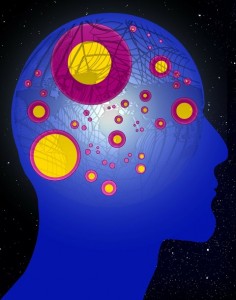 To understand how the unconscious mind works, it’s paramount to recall the famous neurologist Sigmund Freud. Among psychology circles, he is known as the father of psychoanalysis. Freud, metaphorically explained the mind as having three distinct parts: conscious, precocious, plus unconscious.
To understand how the unconscious mind works, it’s paramount to recall the famous neurologist Sigmund Freud. Among psychology circles, he is known as the father of psychoanalysis. Freud, metaphorically explained the mind as having three distinct parts: conscious, precocious, plus unconscious.
Mind theory has changed drastically since the early 1900s. Modern day brain imaging illustrates our brain is separated into several lobes-which regulate emotions, feelings, reactions and memory. The frontal lobe helps filter simple short term memory, like recalling where you parked the car.
Conscious Mind Observations According to Sigmund Freud
Conscious Mind
Think of the Conscious mind as everything you can immediately remember, feel, smell, taste or hear. Our conscious mind is aware of happenings occurring this very second. During counseling and therapy, we use mindfulness meditation to focus upon the current moment. There is much evidence which shows practicing mindfulness actually stimulates the brain’s parasympathetic nervous system, bringing about relaxation. The conscious mind can be trained to reduce stress by strengthening neurons located within the brain’s right hemisphere. Less worry means improved overall health. The idea is to spend less energy on racing thoughts and more time just being.
Preconscious Mind
 Consider your preconscious mind analogous to explicit memory. You can probably remember what you had for dinner last Christmas but it might take a few seconds to actually retrieve the information. In other words, the task requires expending conscious energy to recall the event. How you perceive a specific memory can be useful during counseling sessions. Narrative therapy and rational emotive behavior therapy/CBT challenges beliefs that affect your mood by examining conscious memories in a different light. For example, maybe you have a fear of public speaking due to an embarrassing moment from the past- which now causes you to feel nervous when conversing with large groups. A therapist helps you bring to conscious awareness associated with the bad memory. Over time, you can literally train your brain to elicit an alternative response pattern. Studies at Northwestern University Chicago illustrate that your brain rewrites the past.
Consider your preconscious mind analogous to explicit memory. You can probably remember what you had for dinner last Christmas but it might take a few seconds to actually retrieve the information. In other words, the task requires expending conscious energy to recall the event. How you perceive a specific memory can be useful during counseling sessions. Narrative therapy and rational emotive behavior therapy/CBT challenges beliefs that affect your mood by examining conscious memories in a different light. For example, maybe you have a fear of public speaking due to an embarrassing moment from the past- which now causes you to feel nervous when conversing with large groups. A therapist helps you bring to conscious awareness associated with the bad memory. Over time, you can literally train your brain to elicit an alternative response pattern. Studies at Northwestern University Chicago illustrate that your brain rewrites the past.
Unconscious Mind
Your unconscious mind stores memories, impulses, feelings and images that are not readily available on a conscious level. If you have ever heard the term psychodynamic therapist, then you might guess that repression is at the forefront. This is because unconscious pain conflicts with the other areas of thought. According to Freud, painful unconscious issues greatly influence our reactions.
The unconscious mind is probably the most widely discussed phenomenon throughout psychological history. A highly talented psychiatrist named Carl Jung branded his own style for working with the unconscious mind, utilizing a concept he called individuation. Jung’s well known analytic psychology attempts to fuse together opposite conscious levels.
How powerful is the Unconscious Mind?
The MBTI Myers Briggs 16 Personality type test is (also by Jung) determines a person’s behavioral patterns based unconscious tendencies. Many human resource departments have been known to use this test to match people with careers. Some folks call it the introvert extrovert test. Aspects of Nero Linguistic Programming harnesses unconscious images to illicit a new desired emotion. Within the NLP therapy toolbox is the anchor technique. If one can anchor an ascribed emotion to a certain action, a whole new outcome can be created. Naturally, hypnosis has been used by many hypnotherapists to literally change conscious actions.
World recognized medical hypnotist Milton Erikson combined strategic therapy and hypnosis to communicate with the unconscious mind. Subliminal messages are constantly used on TV advertising to influence your purchasing decisions. These observations from Chicago Counseling Therapy have been compiled for your reading enjoyment.
Research scientists continue to learn how the unconscious mind works.
